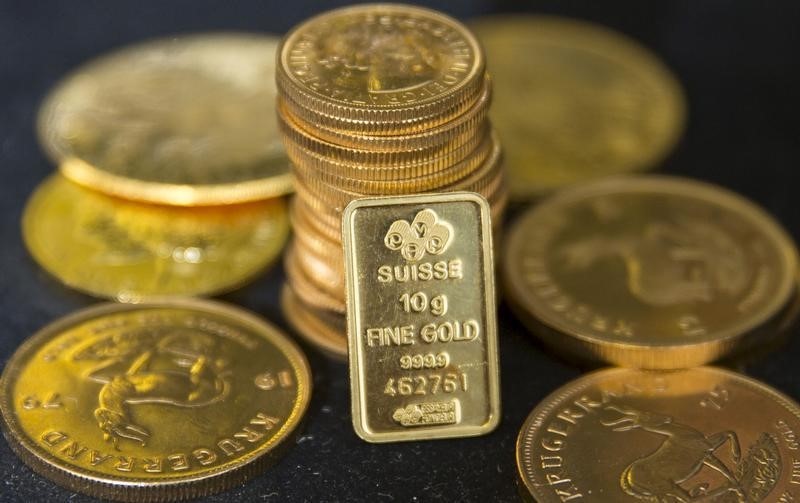By Clara Denina
LONDON (Reuters) - Die-hard gold bugs looking for the market's return to prominence are being confronted with a sobering truth; in the latter explosive phase of bullion's 10-year bull run, the last thing on investors' minds was safety - the watchword for its appeal.
Those buying gold as prices approached a record $1,920.30 (1,244.2 pounds) an ounce were not seeking protection or even diversification; they were looking to make a quick buck on what has become just another financial instrument.
This means gold is exposed to the same factors as other instruments, such as equities, without the traditional support of being regarded as a safe haven from political and financial instability.
The participation of these new investors contributed to the ferocity of gains between 2008 and 2011, which at an annual $183 an ounce dwarfed the $80 an ounce between 2001 and 2007.
"When the market was rising, the number of clients investing in gold funds grew by 185 percent," said Adam Laird, an investment manager at Hargreaves Lansdown (L:HRGV).
"The soaring price clearly lured many new investors into the metal, and they saw it more as a growth generator than a safe haven."
Laird does not expect gold to rise in the short or medium term. "Slowing growth in emerging markets can't help demand and interest rates are a constant threat."
Since the record high set in September 2011, gold has slumped about 40 percent to around $1,180.
However, the largest losses of nearly 30 percent were seen in 2013, when the Federal Reserve said it could soon start tapering its bond-buying programme, seen as a precursor to higher interest rates.
Tensions over Ukraine between Russia and Europe, security risks in the Middle East and the Greek debt crisis in recent months and years, which in previous times would have been a plus, have done little to improve gold's fortunes.
NO PORT IN A STORM
Even more worrying for the bulls, the prospect of a hard landing in China this year and the possibility of it leading to another financial crisis have not helped, an indication that gold's role as a safe place to park assets is not so relevant.
This idea is backed by recent research from economists at the Bank of England (BoE), which contradicts the idea of gold as a hedge against risk and uncertainty.
"Investors require additional compensation for holding gold relative to risk-free government bonds," BoE economists Michael Chin and Zhuoshi Liu said in a paper.
"Our findings contrast with the common view that gold offers a high degree of insurance, in the sense that returns are countercyclical."
Gold's destiny also lies with physically backed exchange-traded funds, which have seen large outflows. ETF holdings have fallen more than 40 percent to around 42 million ounces from record highs above 76 million ounces in December 2012.
"One feature of the 10 years to 2013 was the explosion in ETFs that probably attracted some shorter-term investors into gold in a way you wouldn't have had historically," Killik & Co head of fund research Mick Gilligan said.
"Gold generated returns for a few years and that momentum probably went on a bit longer than it should have," Gilligan said, adding that his fund cut its exposure to gold last year.
Bullion's rally at the turn of the 21st century was sparked by a series of events including the dotcom bubble bursting, 9/11, U.S. rates hitting historical lows in 2003 and the invasion of Iraq, also in 2003.
Fears of spiralling inflation due to ultra-loose monetary policy in the United States and elsewhere also backed higher prices.
But inflation has remained low and Charlie Morris, a fund manager at Atlas Pulse, thinks it is unlikely to be a threat over the next few years.

"(However) if there was significant monetary stimulus, beyond QE (quantitative easing), that targeted nominal GDP growth, then inflation would start to rise," Morris said.